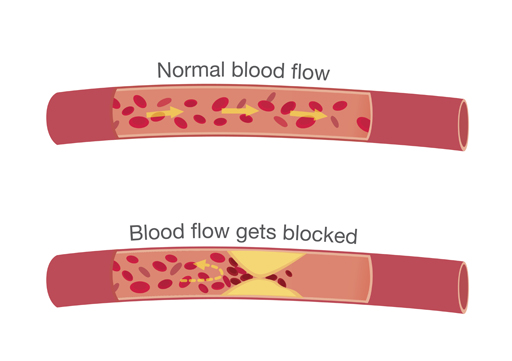3.1 Saturated fats
The medical advice is that eating a diet high in saturated fat can raise the level of cholesterol in the blood. However, further research [Tip: hold Ctrl and click a link to open it in a new tab. (Hide tip)] (Press Association, 2015) suggests there may not be such a clear link. One of the risk factors for coronary heart disease (CHD) is an inappropriate ratio of different types of fat in the blood, including the three sorts of cholesterol; Triglycerides (TG), High Density Lipids (HDL) and Low Density Lipids (LDL) .
Do you know your cholesterol number? Heart UK – the cholesterol charity – says it is important to know it. If you are between 40 and 75 years old, you should have your cholesterol tested every five years (yearly if you have raised cholesterol). A simple venous blood sample (from your arm, not your finger) will give you the number for all types of cholesterol.
Table 2 shows the normal range for adults and what the different lipid fractions mean.
| Type of fat | Ideal amount | Comments |
|---|---|---|
| Total cholesterol (TC) | 5 mmol/L or less | Higher levels do not necessarily require treatment, as other factors must also be taken into account. |
| Non-HDL cholesterol | 4 mmol/L or less | HDL is ’good’ cholesterol, so this number relates to ‘bad’ cholesterol. |
| LDL-C | 3 mmol/L or less | This is ‘bad’ cholesterol. |
| HDL-C | Over 1 mmol/L for men and 1.2 mmol/L for women | This is ‘good’ cholesterol which clears fat from blood. |
| TC:HDL ratio | Above 6 mmol/L is high risk | Ideally, this should be less than 6. |
| TG (triglycerides) | Less than 2 mmol/L | Needs to be a fasting sample. This is your ability to clear fat from blood after a meal. The higher the number, the less your body is clearing fat from blood. It is often affected by alcohol and glucose levels in the blood. |
Fatty deposits can build up on the inside walls of your arteries and prevent the blood from flowing smoothly. This is a particular problem if the arteries that ‘fur up’ are the ones supplying blood to the muscles of your heart to keep it pumping. If they get blocked, you are at serious risk of a heart attack. Sometimes, pieces of the fatty deposit break off, which can lead to the formation of blood clots. These can lodge in the brain, cutting off the blood supply to part of it, causing a stroke (Figure 7).
The reference intake value for total fat is 70 g per day (just over a quarter of a pack of butter, if you ate no other fat!). No more than 20 g of this should be saturated fat. In other words, total fat intake should be no more than 35% of total energy and saturated fat no more than 11%.

